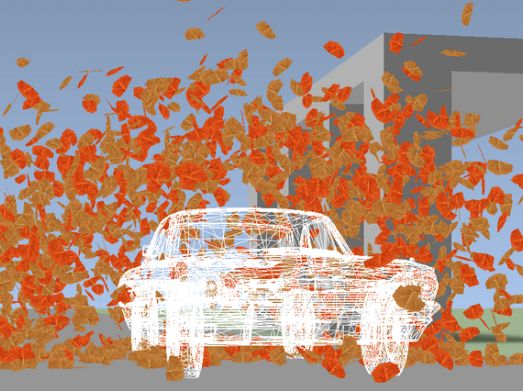|
What happens to the leaves covering your car? The leaves flying off behind your car as you drive, are swept away in the slipstream, blown away, and are left behind after dancing in the air awhile before settling back down onto the road. That's a better analogy for this process - one I like a lot more. Yes, droplets of water flying off my body when I swim is a nice analogy - but only if you swim ... whereas many, many more people have had the experience of getting into a car covered in leaves, and driving away, watching the leaves flying off in the rear view mirror.
That's why I prefer using the analogy of leaves flying off my car as I drive away in the fall, rather than droplets of water flying off my body as I swim, to describe a way of gaining freedom from thoughts which grip, from thoughts which grab, from thoughts I'd rather not be dealing with in the moment (to be sure, I can deal with them later or not - without that, the integrity of this model is compromised).
Listen: if we took the purists' Zen meditative approach to such thoughts, we wouldn't do anything at all with them, yes? We'd just let them be, and not interfere with them. But the great utility of Zen is its pragmatism: use it - just don't make a rule of it. The pragmatism of Zen regards its techniques and even its raison d'etre as a toolbox of implements which are used secondarily as and when required to make life work, and primarily as a context within which life already works. It's like that, when playing with the visual model of thoughts like leaves flying off and away and behind: use it - just don't make a rule of it. As with anything in this genre, making a rule of it is the most certain, the most sure-fire-est way to reduce it's power and utility, an effective way to rob it of its potency. You must create it newly each time - over and over and over again. Otherwise it has no life.
That's how I segued from droplets of water flying off my body as I swam breaststroke and freestyle / crawl in a twenty five yard pool for forty five minutes, to leaves flying off my car as I drive away in the fall, as a way of playfully dealing with those thoughts I'd rather not be dealing with in the moment, thoughts I'll deal with later or not. It works. It's a great visual model, a great visual tool. Use it if you like it. Use it if it works for you. And if it doesn't work for you or if the tool breaks, throw it away and get a new one, or make up another tool - like leaves flying off - which works for you.
